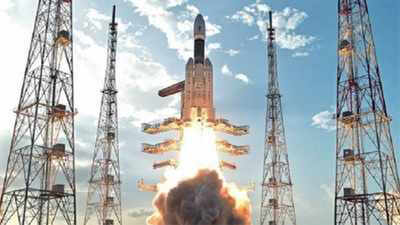- News
- India News
- Debris worry: 50 impact tests at 5km/sec to test Gaganyaan crew module
Debris worry: 50 impact tests at 5km/sec to test Gaganyaan crew module

ISRO works on improving payloads with Gaganyaan's crew module. File photo (representative image)
Bengaluru: Concerns about protecting payloads against orbital debris and micro-meteoroids is not strange for any space agency, but they get amplified when humans are involved. And, the Indian Space Research Organisation (ISRO) is preparing for the same with the crew module of Gaganyaan which will be carrying astronauts to space.
To test the module’s material against what the space agency calls MMOD (Micro-Meteoroid and Orbital Debris), it plans to conduct at least 50 hypervelocity impact tests that evaluate critical components of the crew module against MMOD impact.
ISRO’s Human Space Flight Centre (HSFC) has signed an MoU with the Defence Research and Development Organisation’s (DRDO) Terminal Ballistics Research Laboratory (TBRL), which has the only test facility in India to achieve a velocity of 5,000 meters/second.
Stressing on the importance of tests for the safety of astronauts, Unnikrishnan Nair, director, HSFC, said that the threat of space debris impact due to an exponential increase in MMOD around Earth in the last 60 years of space exploration has grown multifold.
DRDO Facility
“Orbital debris moves at such high velocities that the impact of even a paint flake can cause significant damage to the crew module in the absence of appropriate shielding,” Nair said at a video conference.
A two-stage light gas gun facility at TBRL in Chandigarh — the only test facility that can achieve the required velocity — will be utilized to conduct the hypervelocity impact studies. “Some feasibility tests have already been conducted on dummy targets to establish the internal ballistics parameters and high-speed diagnostics to meet the stringent timelines of the human space mission,” the DRDO said.
DRDO’s coordinator for the Gaganyaan mission, Tapan Khilariwal, confirmed that at least 50 hypervelocity impact tests have been envisaged in the MoU to evaluate critical components of the crew module.
Space Debris
The concerns of an impact are not unfounded as reminded by the recent collision of an ISS (International Space Station) robotic arm with a piece of space debris.
As per a recent dataset made public by the General Catalog of Artificial Space Objects by astronomer Jonathan McDowell, which is considered the most complete catalog of satellites, spacecraft, debris, space organizations, and launches, at least 23,000 of the more than 50,000 space objects’ database since 1958 continue to remain in orbit.
And, if plans by various space agencies and private firms are any indication, the increasing number of space missions will only add to this number — more swiftly than ever before in the history of space exploration.
To test the module’s material against what the space agency calls MMOD (Micro-Meteoroid and Orbital Debris), it plans to conduct at least 50 hypervelocity impact tests that evaluate critical components of the crew module against MMOD impact.
ISRO’s Human Space Flight Centre (HSFC) has signed an MoU with the Defence Research and Development Organisation’s (DRDO) Terminal Ballistics Research Laboratory (TBRL), which has the only test facility in India to achieve a velocity of 5,000 meters/second.
Stressing on the importance of tests for the safety of astronauts, Unnikrishnan Nair, director, HSFC, said that the threat of space debris impact due to an exponential increase in MMOD around Earth in the last 60 years of space exploration has grown multifold.
DRDO Facility
“Orbital debris moves at such high velocities that the impact of even a paint flake can cause significant damage to the crew module in the absence of appropriate shielding,” Nair said at a video conference.
A two-stage light gas gun facility at TBRL in Chandigarh — the only test facility that can achieve the required velocity — will be utilized to conduct the hypervelocity impact studies. “Some feasibility tests have already been conducted on dummy targets to establish the internal ballistics parameters and high-speed diagnostics to meet the stringent timelines of the human space mission,” the DRDO said.
DRDO’s coordinator for the Gaganyaan mission, Tapan Khilariwal, confirmed that at least 50 hypervelocity impact tests have been envisaged in the MoU to evaluate critical components of the crew module.
Space Debris
The concerns of an impact are not unfounded as reminded by the recent collision of an ISS (International Space Station) robotic arm with a piece of space debris.
As per a recent dataset made public by the General Catalog of Artificial Space Objects by astronomer Jonathan McDowell, which is considered the most complete catalog of satellites, spacecraft, debris, space organizations, and launches, at least 23,000 of the more than 50,000 space objects’ database since 1958 continue to remain in orbit.
And, if plans by various space agencies and private firms are any indication, the increasing number of space missions will only add to this number — more swiftly than ever before in the history of space exploration.
FacebookTwitterLinkedinEMail
Start a Conversation
end of article
